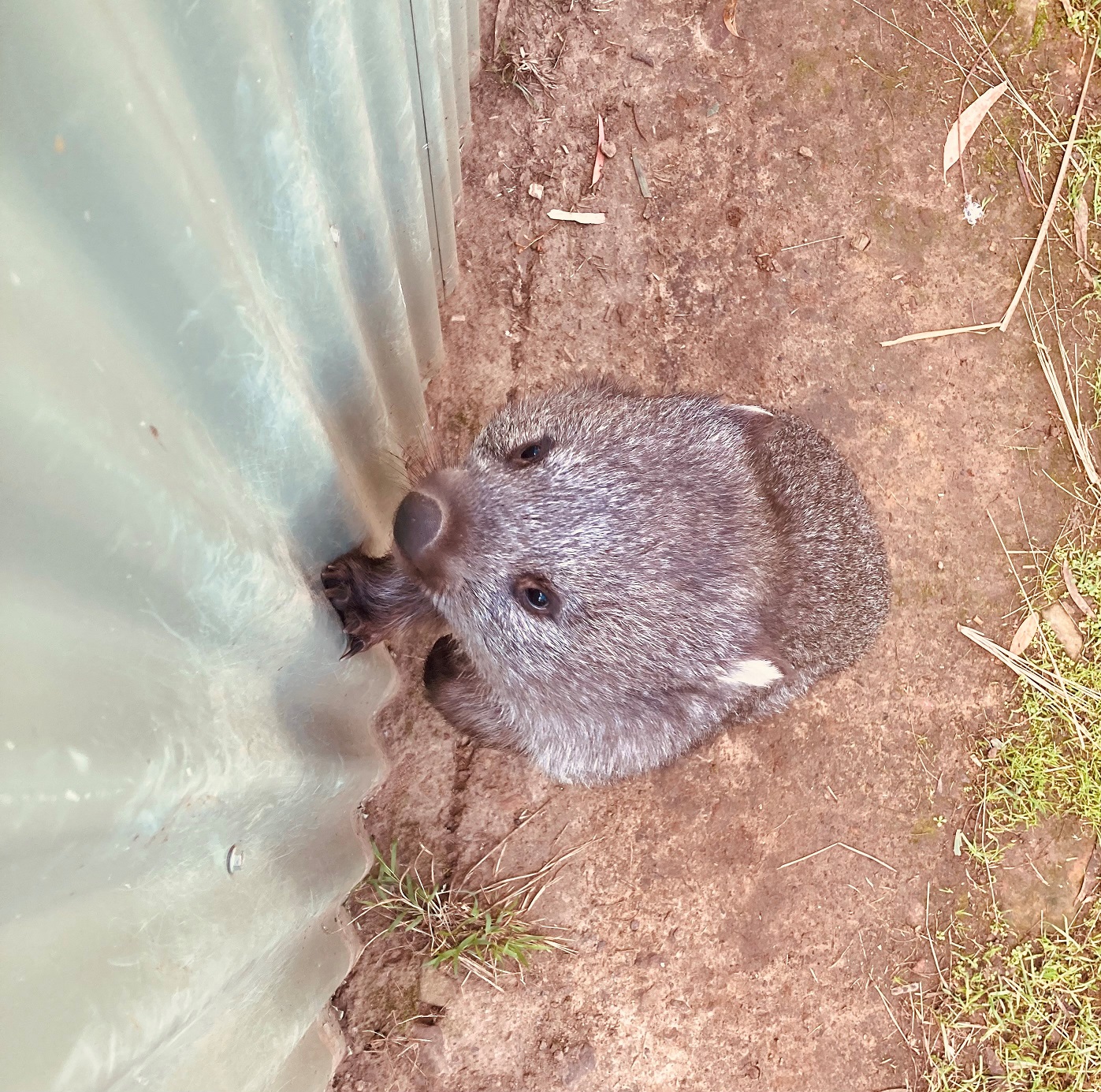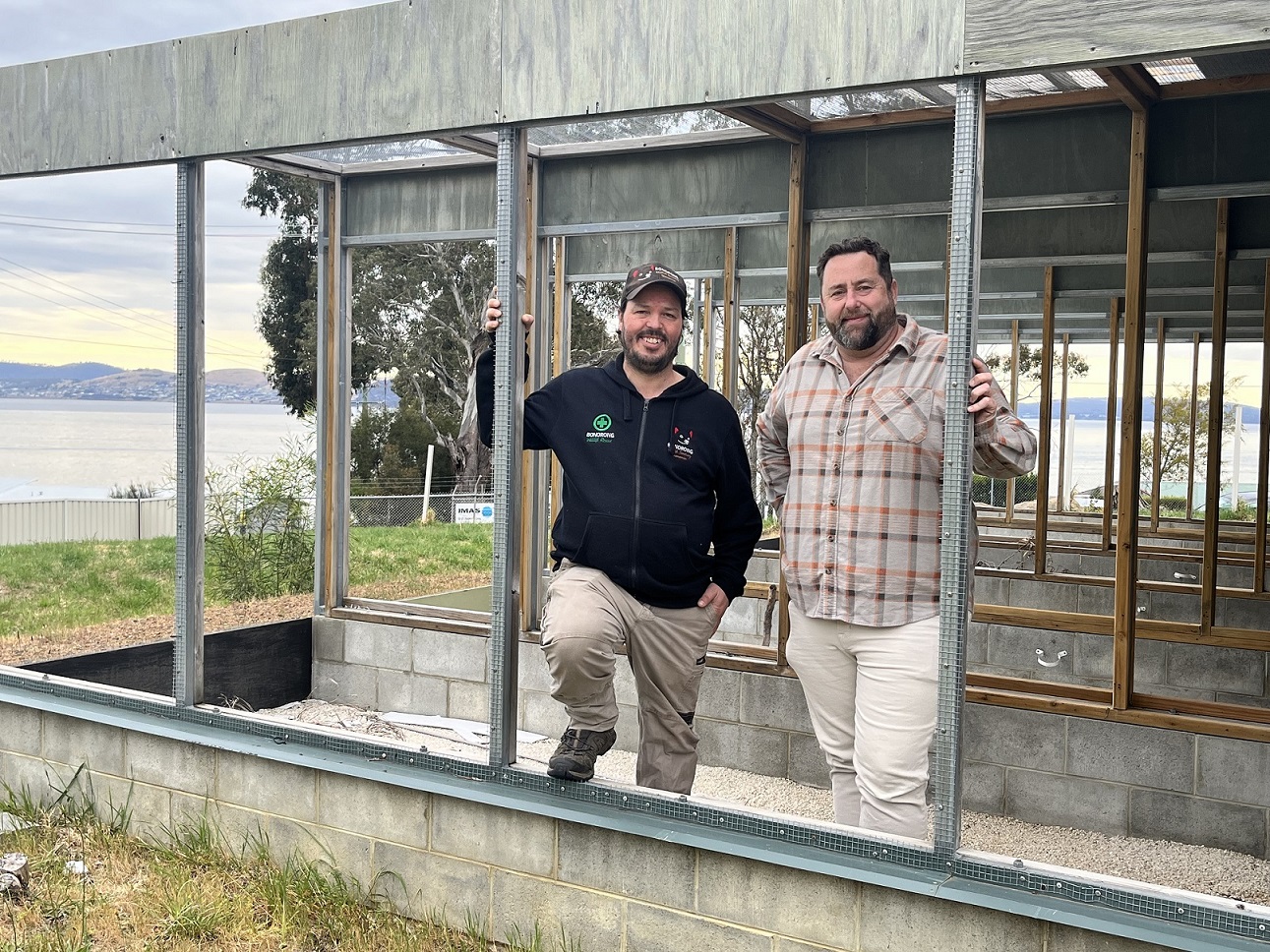
The Institute for Marine and Antarctic Studies (IMAS) has worked with Bonorong Wildlife Sanctuary on a sustainable solution for repurposing the materials being removed ahead of a proposed upgrade to the world-class fisheries and aquaculture precinct at Taroona, Tasmania.
IMAS Fisheries and Aquaculture Centre Head, Professor Sean Tracey said the reusable structures and materials from the former Tasmanian Government’s Wildlife Centre will now be donated to the Bonorong Wildlife Sanctuary.
The Taroona Environment Network (TEN) put forward the solution during the University of Tasmania’s community meetings about the proposed site transformation, and IMAS and the University were keen to make it happen.
“Rather than being sent to landfill, the materials will be repurposed into new animal enclosures and facilities at the wildlife sanctuary. And I couldn’t think of a better way to give these materials a new life,” Professor Tracey said.
 Bonorong recovered aviary mesh screens and roofing, an aviary shed, fencing and a demountable toilet block to reuse at their Brighton sanctuary. Director Greg Irons said the aviaries would be put to good use at the sanctuary.
Bonorong recovered aviary mesh screens and roofing, an aviary shed, fencing and a demountable toilet block to reuse at their Brighton sanctuary. Director Greg Irons said the aviaries would be put to good use at the sanctuary.
“We’ll be using these materials to build an enclosure for our animal rehabilitation, research or sanctuary spaces, with hundreds of animals to benefit from this IMAS donation,” he said.
“We really appreciate IMAS allowing us to sustainably repurpose this equipment for a cause close to all our hearts. It has allowed us to save money and continue the vital work we do.”

Professor Tracey said the aviaries and other structures were originally built for the conservation of Tasmania’s native terrestrial animals, including the captive breeding of endangered Orange-bellied parrots.
“At the new facilities, this vital species conservation work will continue, this time with captive breeding of endangered marine species like handfish and Maugean skate. It’s a great outcome for Tasmanian biodiversity, as the site will once again help our native animals – with a shift in focus from the land to the sea,” Professor Tracey said.
UTAS Chief Sustainability Officer, Corey Peterson, said the University is ranked 1st in the world for a second year for Sustainable Development Goal 13 Climate Action, 3rd in the world for the Life below Water goal, and 4th in the world for the Life on Land goal. The University also has a target of 25% reduction in waste to landfill by 2025.
“We work consistently to embed sustainability in everything we do, so we are very pleased to be putting sustainability into action at IMAS Taroona.”
Images (from top)
Published 15 November 2023